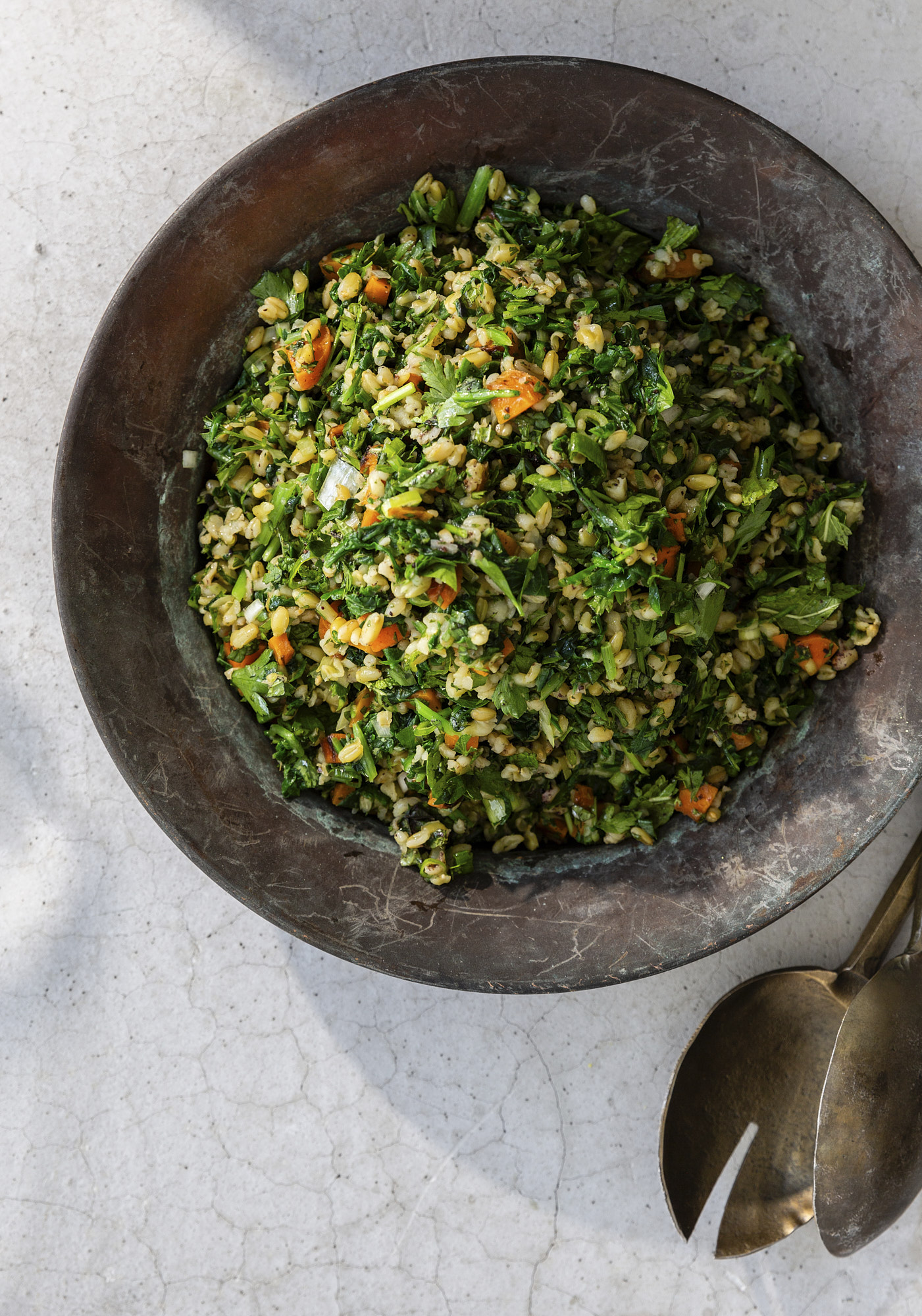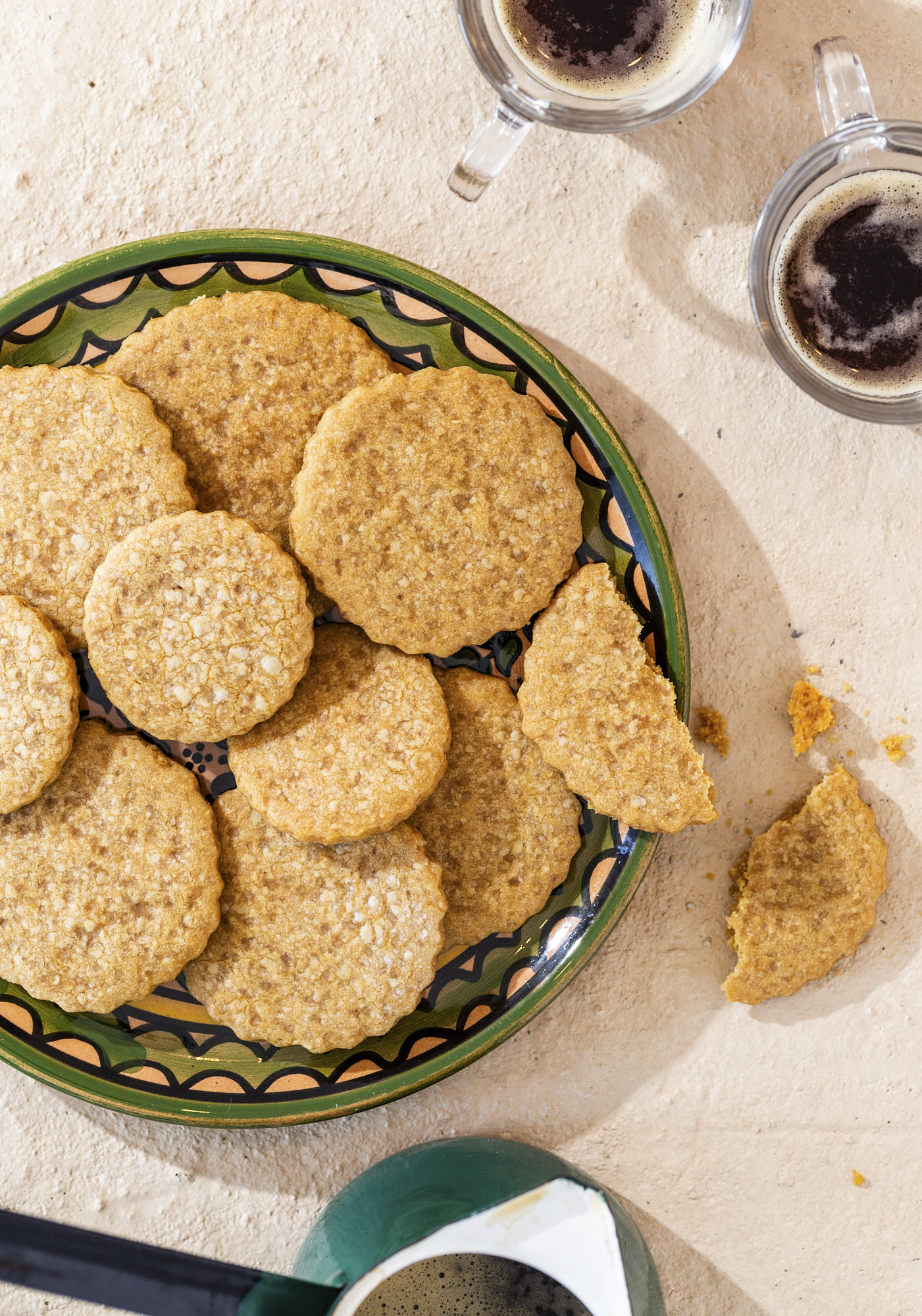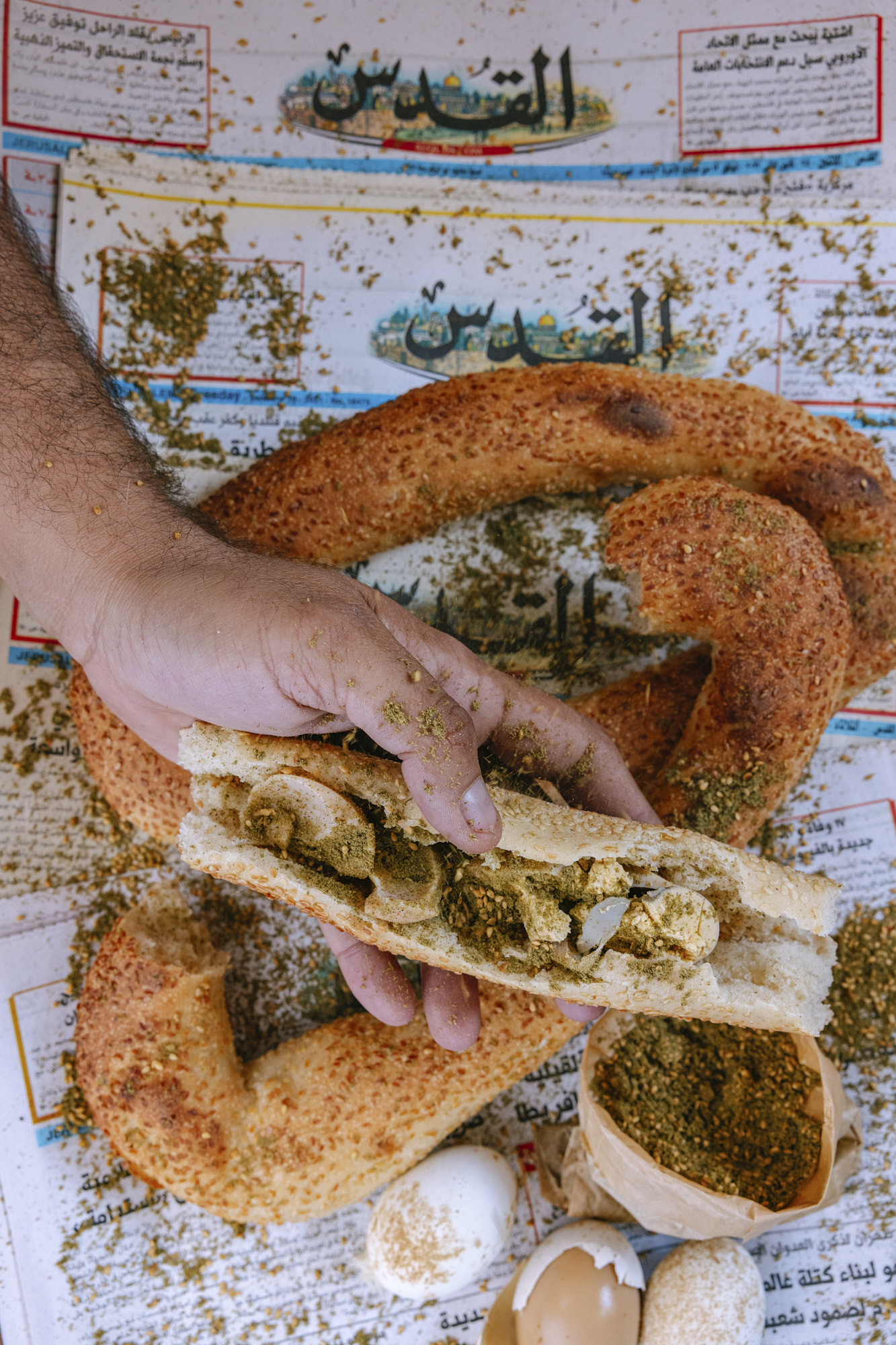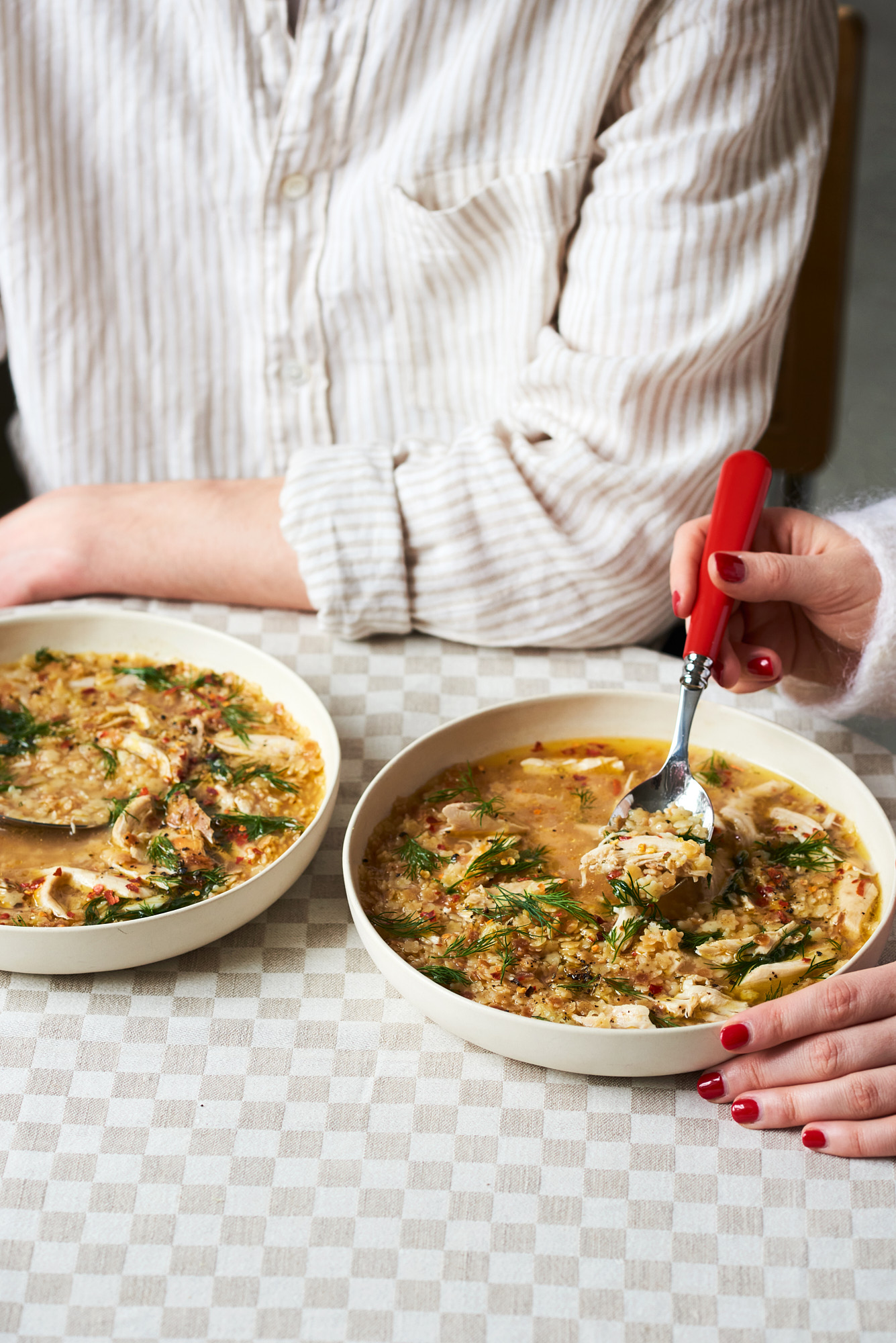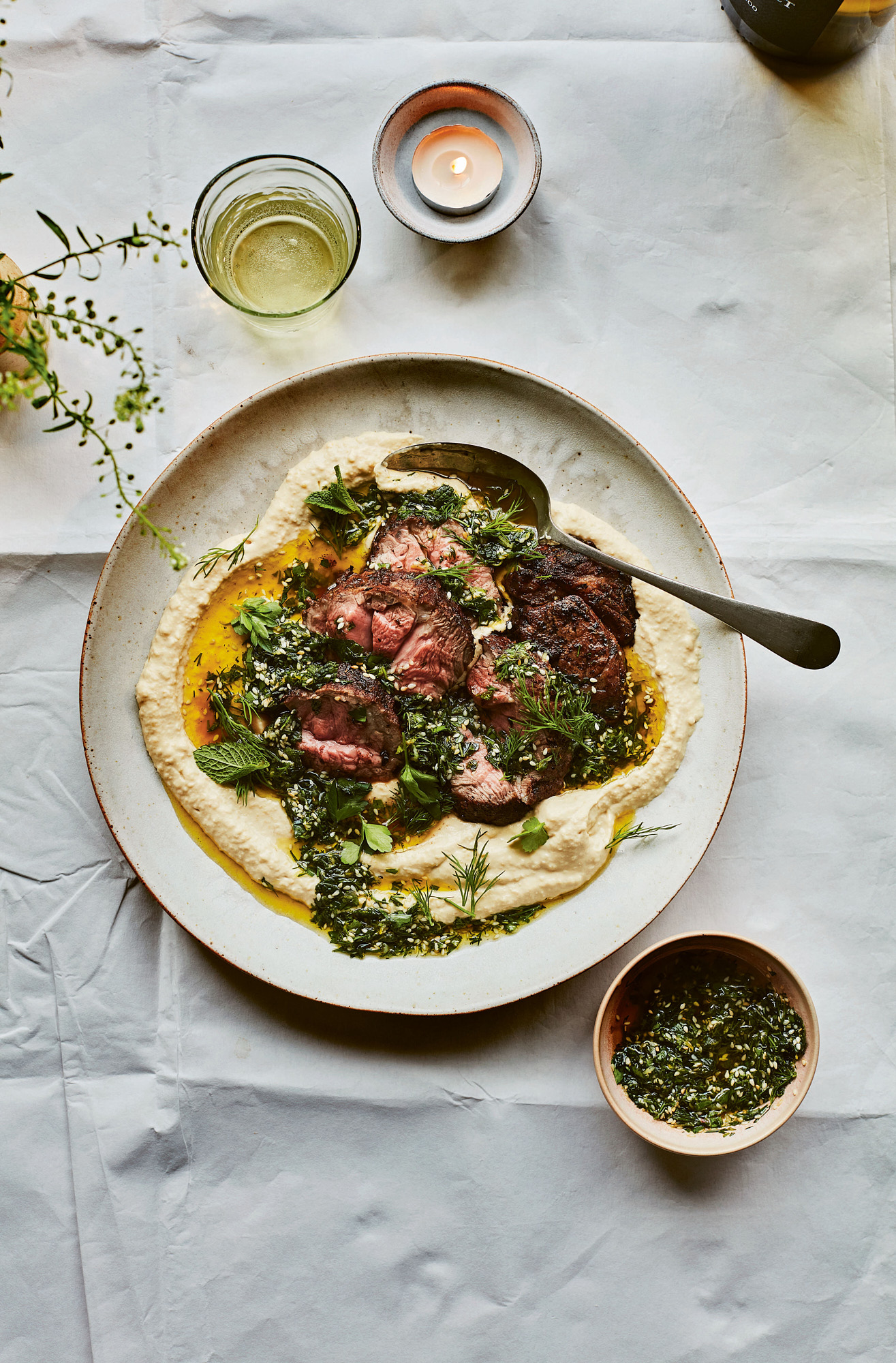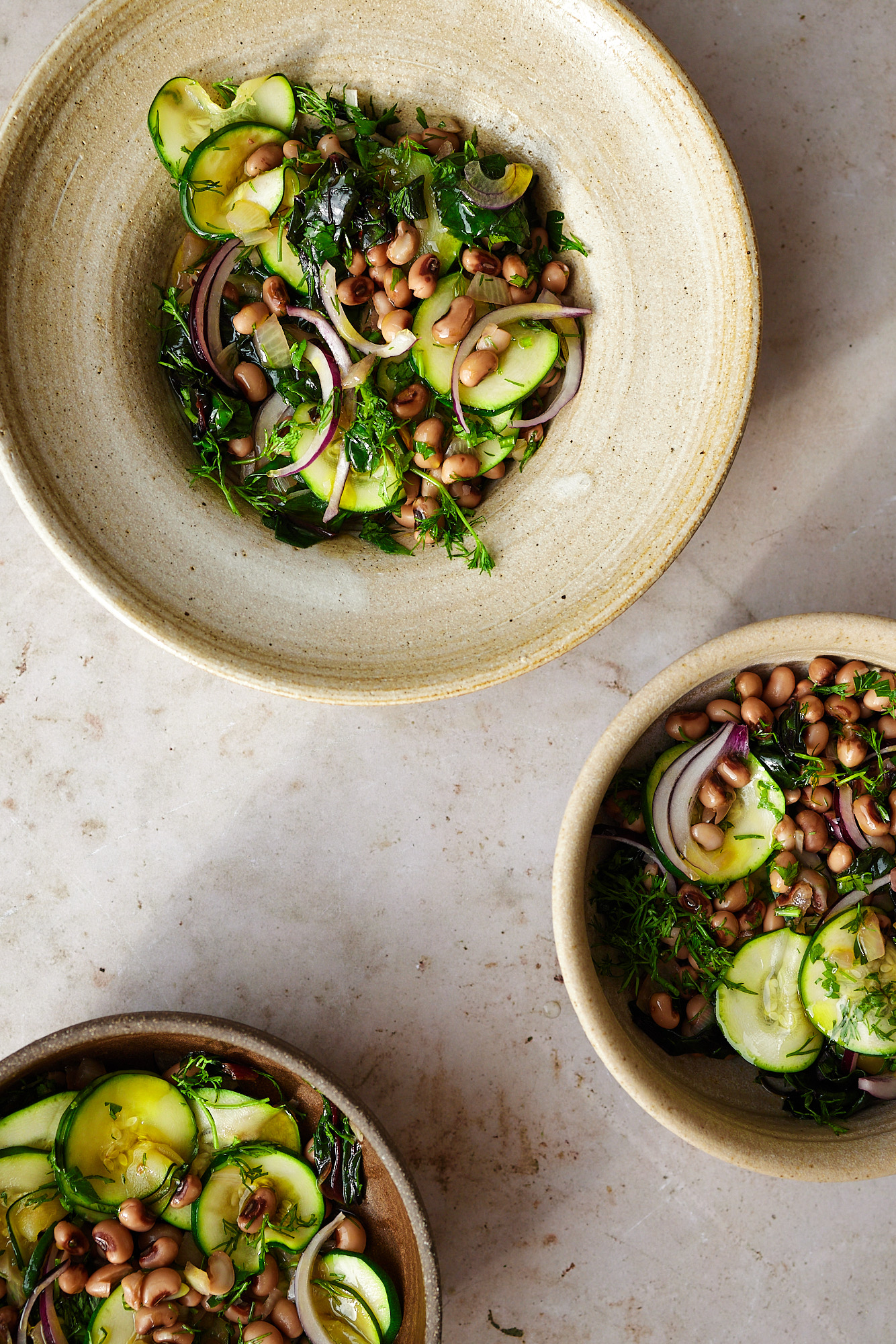

Beans are fast becoming the go-to ingredient for many households who are looking for healthy and sustainable ways to eat. For me it was the staple food I grew up eating all year round. The Turkish Cypriot household is no stranger to a great bean dish, like the one I am sharing with you here. Borulce, also known as black eyed beans, are traditionally cooked without much fuss. My mother’s version, to which she would argue is the best version, contains black eyed beans, chard, olive oil and lemon. The onion would be eaten raw on the side, cut into enormous pieces like an apple almost, and corek would be the bread of choice. So I’ve taken this humble Cypriot dish and added a few simple herbs and courgettes to it and it didn’t disappoint.
Note: Dried beans are preferable in this recipe. Pre-cooked ones tend to be too soft and they loose their structure pretty quickly once re-heated. Having said that, they are good for when you are short on time.
Serves 2 as a main or 3 as a side
Photography: Safia Shakarchi
Season: Late Summer/Autumn
Ingredients
300g dried black eyed beans
1.5 litres of cold water
200g of chard, or any other greens such as kale, roughly chopped
1 medium sized white onion, diced
1 large courgette, sliced thinly
Half a red onion, sliced thinly
Juice of half a lemon
2 tablespoons of olive oil
For the dressing
4 tablespoons of good quality extra virgin olive oil
20g of chopped parsley
20g of chopped dill
1 medium-sized lemon, juiced
Sea salt and cracked black pepper to taste
Method
-
If you are using dried beans, wash them in a sieve with cold water, discarding any gritty bits you may find. Add the beans to the cold water with the lemon juice and place on a medium to high heat and bring to the boil with the lid on. Lower the heat and simmer for 45 minutes. Taste the beans to see if they are softening, and if not continue to cook them until they do. If the water has evaporated and the beans are still too tough, simply add more warm water to the pan and continue to simmer.
-
If you are using pre-cooked beans, there is no need to wash them unless you really don’t enjoy the brine/broth they come in. The pre-cooked beans are cooked so just warm them through at this stage — 5 minutes on a low to medium heat will do the job.
-
Set aside the beans once they are cooked and prepare the dressing and vegetables. I like to drain the water from the beans whilst they sit around otherwise they keep cooking.
-
Place 1 tablespoon of olive oil in a large pan and gently fry the diced onions for 5 to 7 minutes on a low to medium heat. Make sure the onions do not catch or brown, they only need to soften.
-
Wash the chard and place it in with the onions. Cook it on a medium heat until it is wilted, about 5 minutes normally works. I like my greens to have some bite but if you prefer them to be softer continue cooking whilst stirring them gently around the pan. Once the chard or greens have wilted remove them from the pan and set aside in a bowl for later.
-
Use the same pan (no need to wash it) to gently cook the courgettes. Place the remaining tablespoon of olive oil in the pan and add the courgettes. On a medium heat, with the lid on, they should soften within 5 to 6 minutes.
-
Add the cooked chard, onions and beans in with the courgettes. Give it a good stir and then remove the pan from the heat and transfer the whole lot into a large mixing bowl ready to be dressed.
-
Stir through the herbs and red onions. Season with the lemon juice, olive oil and salt/pepper. Taste the salad to make sure you are happy with the seasoning and if you are like me you may want to add more salt. This is a dish which really benefits from good olive oil so no need to be shy with your liquid gold. Buy the best you can afford and pour over liberally. Mopping up the pool of delicious olive oil and lemon juice with some bread at the end of the meal is my favourite part. Serve warm or cold, with some sliced tomatoes and oily tinned fish.

